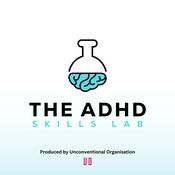Available Episodes
5 of 419
- Football Figures | Stats + Stories Episode 377American Football is a game played with 11 players on offense competing against 11 players on defense, with a sequence of plays executed as one team attempts to outscore the other, but each discrete play reflects actions on the field by players and off the field by coaches. For example, what is the best spot on the field to complete a pass and not get it intercepted? How do quarterbacks differ with respect to their release points? When should you ice the kicker? These are the questions that we are trying to answer on this special football-themed episode of Stats+Stories. Mike Lopez serves as Senior Director of data and analytics at the National Football League, and he's held this position since August of 2018, after previously serving as director in the same department. Before this role, Mike worked at Skidmore College as a lecturer, research associate and as an assistant professor. Adriana Gonzalez Sanchez is pursuing a PhD in business analytics from the University of Cincinnati, with a research focus on discrete data analysis and statistical methodology. Ryan Elmore is an associate professor in the Department of Business Information and Analytics at the University of Denver's Daniel College of Business. His research interests include statistics and sports, non-parametric statistical methods, and energy-efficient high-performance computing. He currently serves as an associate editor for the Journal of Quantitative Analysis in Sports. Background in Sports Analytics 2:00 Evolution of Football Data 5:23 2024 Kickoff Rule Changes 8:36 Next Generation Stats and Data Collection 15:28 In-Game Analytics and Coaching Decisions 20:35 Fourth Down Strategy Revolution 24:23 Future of Player Evaluation 27:20 Replay Process Efficiency 28:30 Ryan Elmore and Adriana Gonzalez Sanchez Interview Starts 31:50 Inspiration for the Research 33:23 Play-by-Play Data 37:53 Defining Iced Kicks & Matching Approach 40:33 Causal Inference & “Parallel Universes” Idea 45:05 Strategic Use of Timeouts & Other Situations 51:03 Future Research Directions 57:25--------58:43
- The Art of Uncertainty | Stats + Stories Episode 376News stories are filled with tales of risk and uncertainty. We're told the probable chance of a weather event or how likely it is that we might contract an illness. There's an art to telling stories with uncertainty that provides context and nuance that is often missing. That is the focus of this episode of Stats+Stories with guest David Spiegelhalter. Sir David Spiegelhalter is a British statistician and Emeritus Professor at the University of Cambridge, known for his work on risk communication and public understanding of statistics. He is the author of The Art of Statistics, a former President of the Royal Statistical Society, and was knighted in 2014 for his services to medical statistics. He also presented BBC documentaries and is the founder of the Winton Centre for Risk and Evidence Communication at Cambridge. Inspiration Behind the Book (1:11) Defining Uncertainty and Its Impact (4:14) Storytelling and Examples in the Book (7:48) Probability and Communication (12:54) Trustworthy Communication (17:34) Application of Trustworthy Communication Principles (19:14) Deep Uncertainty and Imagination (27:42)--------31:19
- Thankful For A Bountiful Harvest - How Bountiful Was It And Who Produced It? | Stats + Stories Episode 45 (REPOST)Linda J. Young is Chief Mathematical Statistician and Director of Research and Development of USDA's National Agricultural Statistics Service . She oversees efforts to continually improve the methodology underpinning the Agency's collection and dissemination of data on every facet of U.S. agriculture. She works on the surveys designed to characterize agricultural activity in the US.--------29:08
- Enhancing Statistical Literacy | Stats + Stories Episode 375Statistical literacy was described by Iddo Gal as "the ability to interpret, critically, evaluate and communicate about statistical information and messages". With that in mind, get ready to take a journey on all the ways our guests are promoting statistical literacy in this episode of Stats+Stories. Glickman/Lesser Interview Starts at 27:42 Pedro Campos is the Deputy Director of the International Statistical Literacy Project (ISLP) and associate professor in the Faculty of Economics at the University of Porto, and director of the methodology unit at Statistics Portugal. He also leads the team of statistical literacy at the global network of institutions for statistical training from the UN, where he helps promote statistical literacy worldwide. Larry Lesser is a professor in the Mathematical Sciences Department of the University of Texas at El Paso. He's also an elected fellow of the American Statistical Association. Lesser has won a number of awards for his work within and outside of his discipline. He's also a singer-songwriter whose passion for combining music and STEM has made its way into his research, grant writing, teaching, outreach, and service, and most of his published poems and songs are STEM-related. Mark Glickman is a senior lecturer of statistics at the Harvard University Department of Statistics and a senior statistician at the Center for Healthcare Organization and Implementation Research, a Veterans Administration center of innovation. He's also a fellow of the American Statistical Association. Before joining Harvard, he was a research professor of health policy and management at the Boston University School of Public Health. He's also served as an elected member of the American Statistical Association's board of directors, as representative of the Council of sections, governing board from night from 2019 to 2021.--------55:36
- No One is Poisoning Your Kids' Candy, Trust the Numbers | Stats + Stories Episode 206 (REPOST)The costumes are ready and the annual opportunity to go out and harass your neighbors to get candy is once again upon us. Yes, it's time for Halloween. And along with Halloween comes the worry, the concern the fear that in fact, someone will be poisoning my kid’s candy. This is something that has lived with us for decades and we have someone today that will help us investigate this mystery on this episode of Stats and Short Stories with guest Joel Best. Joel Best is a Professor Of Sociology And Criminal Justice At The University Of Delaware. His writing focuses on understanding how and why we become concerned with particular issues at particular moments in time–why we find ourselves worried about road rage one year, and identity theft a year or so later. He’s written about the ways bad statistics creep into public debates, and about dubious fears, such as the mistaken belief that poisoned Halloween candy poses a serious threat to our kids. Check out his books Damned Lies and Statistics, More Damned Lies and Statistics, Stat-Spotting.--------8:58
More Education podcasts
Trending Education podcasts
About Stats + Stories
Statistics need Stories to give them meaning. Stories need Statistics to give them credibility. Every Thursday John Bailer & Rosemary Pennington get together with a new, interesting guest to bring you the Statistics behind the Stories and the Stories behind the Statistics.
Podcast websiteListen to Stats + Stories, All Ears English Podcast and many other podcasts from around the world with the radio.net app

Get the free radio.net app
- Stations and podcasts to bookmark
- Stream via Wi-Fi or Bluetooth
- Supports Carplay & Android Auto
- Many other app features
Get the free radio.net app
- Stations and podcasts to bookmark
- Stream via Wi-Fi or Bluetooth
- Supports Carplay & Android Auto
- Many other app features


Stats + Stories
Scan code,
download the app,
start listening.
download the app,
start listening.




































